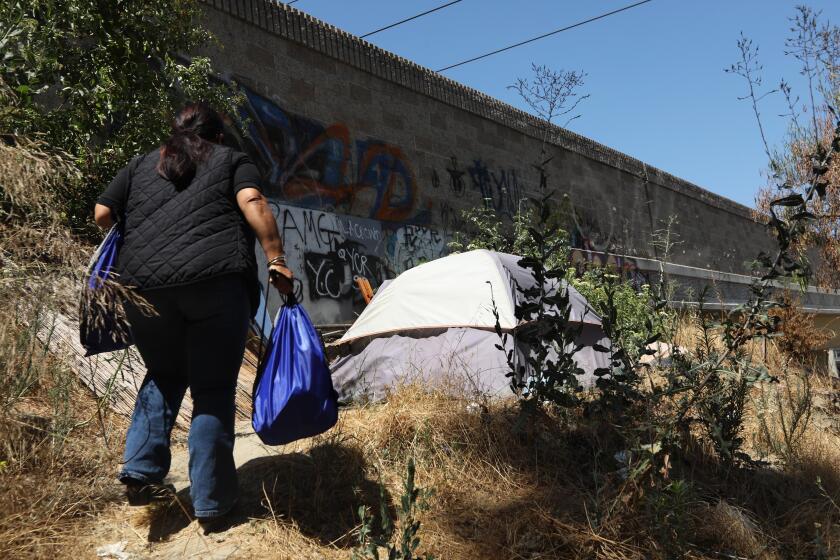Homeless in New York: A Woman Takes to the Streets to Save Her Life
Nothing in Jocelyn Gadson’s appearance betrays the tumult of her life. She walks the streets of Manhattan with a ribbon in her carefully combed hair. Her dress is neat.
Yet, at age 37, she is homeless.
It is devastating, she says. “It’s like a disease like cancer and AIDS. If you’re not strong it will eventually eat you up and kill you.”
She dreams of having a room of her own with a door that can be locked, of regaining enough self-respect to see her four children again, of returning to school.
Real life is closer to her nightmares than to these dreams. Recently she has slept beneath an overpass near the United Nations headquarters. Sometimes she can beg enough on the subway to rent a room for a night.
Her friends are fellow homeless people. Mornings they often take the sun on the benches in the Whitney Museum of American Art annex, at Park Avenue and 42nd Street. There, she recently told about her life.
She was born in Manhattan, one of six kids. “I was a sickly child. The dog had to stay in the back yard because I was allergic to him. I couldn’t clean my own room because dust balls bothered me so I always had things done for me.”
That was a long time ago. She remembers marrying at age 16 and having the first of her children, divorcing her husband, who had become a drug addict, and being remarried--to an alcoholic who beat and stabbed her--leaving him, and finding herself without a home.
“I knew it was either leave there or death,” she said. She took to the streets in the winter of 1988-89.
“I didn’t know where I was going or anything. I used to go to hospitals and sit in the emergency rooms,” she said.
She tried a women’s shelter. “There were women sleeping with women, and I was not used to that. There was fighting and stealing. . . . The people in the shelters make life more miserable than it already is.”
Finally, a homeless woman from Virginia showed her how to survive outside the shelter system. She pointed out the areas in Grand Central Station where the police leave the homeless alone. For a time, Gadson spent nights in a small cubicle in the train tunnels underneath Grand Central, watching train crews.
At other times she stayed in automatic bank teller lobbies, in abandoned cars, in the halls and stairwells of buildings. She slept on benches, with only flattened cardboard boxes between her and the cold.
When she and others slept under a road overpass, she recalled, a group of people they called the “midnight run” dropped off blankets and cardboard boxes twice a week.
She got into a fight with another homeless woman, was convicted of assault and spent eight months in jail--until last May.
“She was taking my stuff. I beat her with a pipe,” she said. “I have a bad temper. It’s kind of uncontrollable when I do go off.”
In the last year, she began collecting money from train commuters as a representative of United Homeless Organization, which permits the homeless to solicit donations in its name in exchange for a fee of $10 a day.
Gadson uses money from the organization to buy and distribute doughnuts or sandwiches to homeless people in the subway system. She sometimes collects clothes at a table in Grand Central and helps to distribute them.
With the money she collects each day, she frequently gets a Harlem hotel room. She wears clothes that the organization collects from commuters; when they are dirty, she throws them away.
She takes pride in her appearance. She paints her nails red (“If you keep them painted then the people can’t tell they’re dirty”) and wears shiny black shoes with small bows on them.
“They don’t look like they cost $9.99,” she says proudly.
Gadson would like to see her three grandchildren for the first time and to recover enough dignity to see her children again. Before that day comes, she said, she wants to replace her missing upper teeth.
And she wants to go back to school.
“I want to be able to help people and make a difference. I don’t care if it’s only this big ,” she said, her two fingers an inch apart. “Just to make a difference--to make something work and to make sense out of everything I’ve gone through.”



